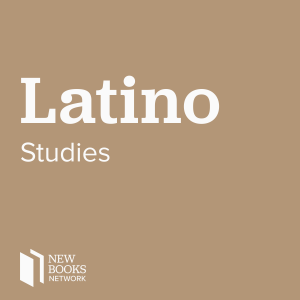
Johana Londoño, "Abstract Barrios: The Crises of Latinx Visibility in Cities" (Duke UP, 2020)
 2021-04-16
2021-04-16
Download
Right click and do "save link as"
The rapid gentrification of Black and brown neighborhoods in urban areas by predominantly upper-class white and other white-adjacent peoples is largely facilitated by urban redevelopment and revitalization projects. These projects often usher in aesthetics that seek to attract those understood as desirable populations. But what happens when the aesthetics of poor Black and brown neighborhoods themselves become the vehicle for gentrification and urban renewal? As Johana Londoño writes, “the aesthetic depiction and manipulation of Latinx urban life and culture as a way to counteract the fear that Latinxs and their culture were transgressing normative expectations of urbanness” (ix).
In her new book, Abstract Barrios: The Crises of Latinx Visibility in Cities (Duke University Press, 2020), Dr. Londoño traces how Latinx people are targeted as problems in urban areas that need to be addressed. Simultaneously, architects, urban planners, policymakers, ethnographers, business owners, and settlement workers – all of whom Londoño refers to as “brokers” – were carefully pulling into their projects the visual aesthetics of barrios which would at once produce a Latinized space while simultaneously “not interfere in the economic and cultural interests of normative urbanity” (xvii).
There was danger in representing barrios because it threatened urban normativity. For Londoño, “Because barrios in US cities are largely the result of unequal forces, reproducing barrio culture and spatial layouts, besides being parodic, would make plain the failures of liberalism to treat all individuals equally” (9-10). Representing barrios in full would reveal the unequal relations of power, state and federal disinvestment in Black and brown neighborhoods, and the economic and material realities of these neighborhoods that go into the formation of barrios. Abstraction but not disruption, however, seems to be have been the goal. By making Latinxs legible in a normative sense, their aesthetics then became implicated in the capitalist spatial order. “I argue that Latinx visibility has been made key to the cyclical nature of U.S. capitalist urbanism: its decay and the reconstitution of its normativity,” writes Londoño (5). The aesthetics found in barrios became abstracted enough to appeal to urban capitalism and thus became implemented onto the gentrifying urban landscape.
By writing the history of barrios and the marginalization of Latinxs in urban spaces, and by focusing on the brokers who manipulate Latinx urban culture to make it visible in mainstream spaces, Johana Londoño underscores how the built environment as a racial project continues to build on racial hierarchies to maintain structures. She covers instances of manipulation of barrio aesthetics in New York, Miami, San Antonio, Los Angeles, Santa Ana and concludes in her hometown of Union City, New Jersey. Londoño’s skill of highlighting the ways barrio aesthetics play out on the gentrifying landscape of the modern renting market seamlessly brings into focus all at once the racialized and spatial histories of a neighborhood, the decisions by brokers on how to target Latinx consumers, and implications of barrio aesthetics in an increasingly segregated urban landscape. Abstract Barrios is a book that should be read across ethnic studies, urban studies, and in the fields of art and architecture.
Jonathan Cortez is a Ph.D. candidate of American Studies at Brown University. They are a historian of 20th-century issues of race, labor, (im)migration, surveillance, space, relational Ethnic Studies, and Latinx Studies.
Learn more about your ad choices. Visit megaphone.fm/adchoices
Support our show by becoming a premium member! https://newbooksnetwork.supportingcast.fm/latino-studies
view more
More Episodes
012345678910111213141516171819
Create your
podcast in
minutes
- Full-featured podcast site
- Unlimited storage and bandwidth
- Comprehensive podcast stats
- Distribute to Apple Podcasts, Spotify, and more
- Make money with your podcast
It is Free
- Privacy Policy
- Cookie Policy
- Terms of Use
- Consent Preferences
- Copyright © 2015-2024 Podbean.com





